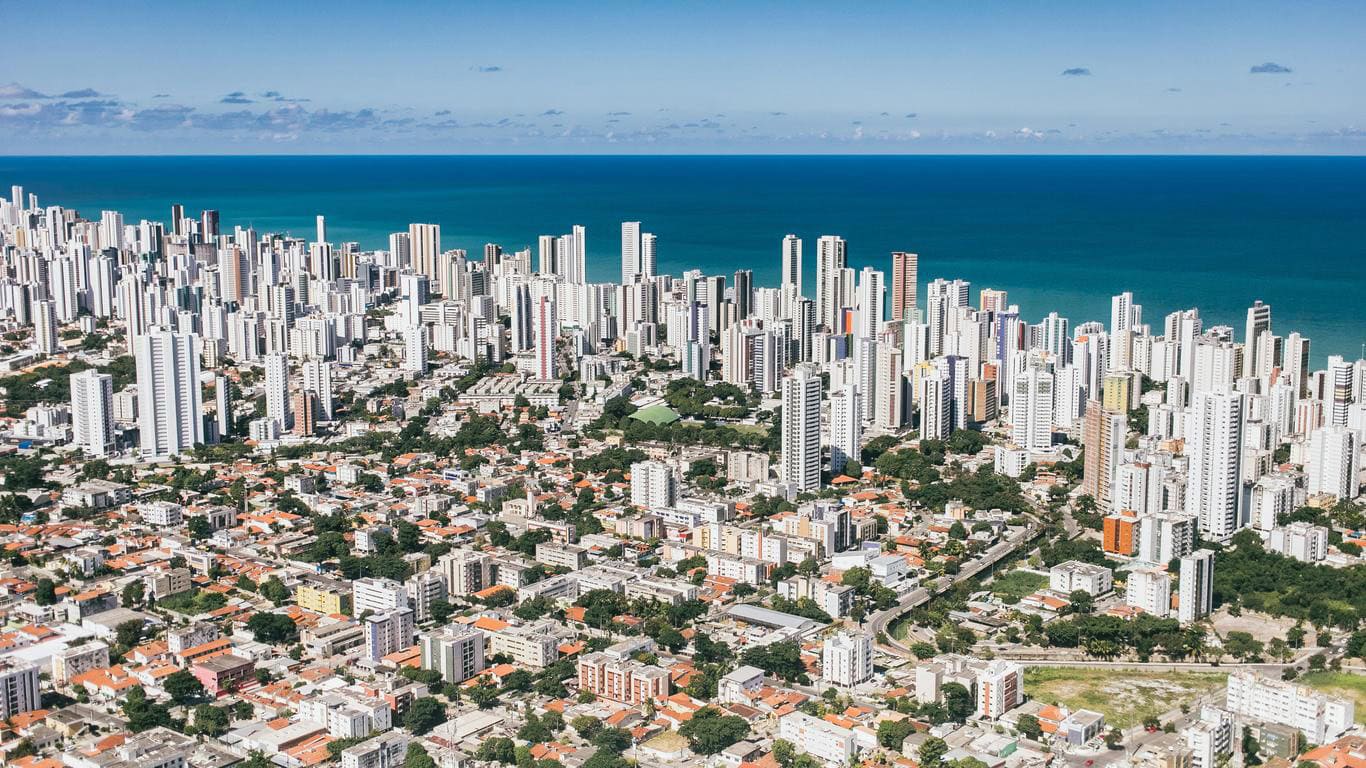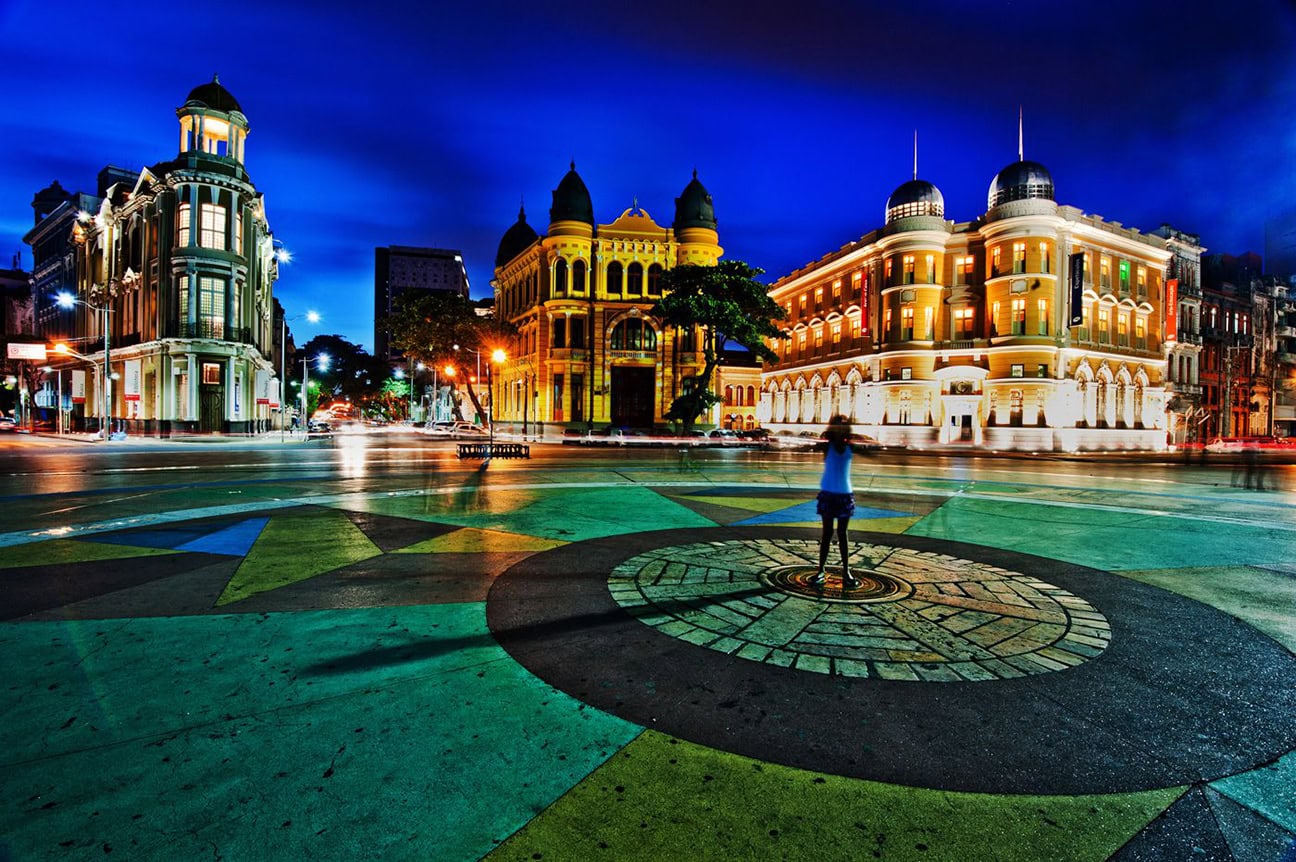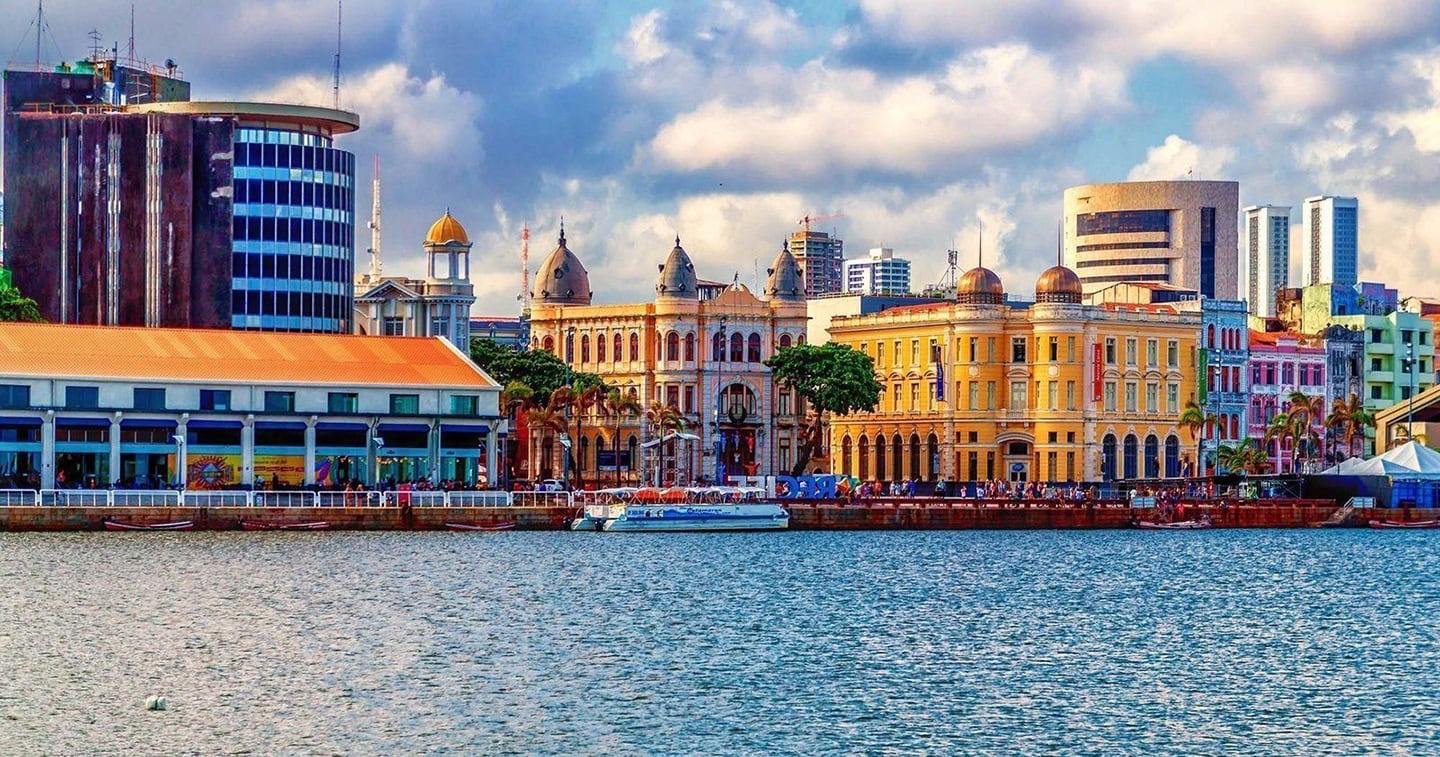Its natural beauty captivates tourists, while its historical centers, besides being beautiful, also narrate much about the history of Brazil.
Recife, the capital of Pernambuco, stands as a recognized cultural and gastronomic hub in Brazil. The city is diverse in attractions, showcasing the harmonious contrast between the historic monuments of Recife Antigo and the modern structures of the city’s business center.
Due to its complex network of rivers, bridges, and islands, Recife is known as the “Brazilian Venice.” The city is intersected by rivers resembling Venetian canals.
Explore Recife’s Cultural Diversity
 The city offers charms for every taste, from Recife Antigo, the historic center, featuring the Marco Zero — the exact point where the city was born — to the charming Bom Jesus Street, recognized as the third most beautiful street in the world by the American magazine Architectural Digest. Another highlight is the Ricardo Brennand Institute, a renowned Brazilian art collector, housing personal art collections and armor in red brick castles surrounded by extensive gardens. Don’t miss the Sculpture Park, an open-air museum with about 90 works by Brazilian artist Francisco Brennand. A must-visit is the Kahal Zur Israel Synagogue, the first synagogue in the Americas, founded in the 17th century. Its facilities now house the Jewish Center of Pernambuco, portraying a part of the region’s history through archaeological excavations, exhibitions, and documents about the Jewish history in the area.
The city offers charms for every taste, from Recife Antigo, the historic center, featuring the Marco Zero — the exact point where the city was born — to the charming Bom Jesus Street, recognized as the third most beautiful street in the world by the American magazine Architectural Digest. Another highlight is the Ricardo Brennand Institute, a renowned Brazilian art collector, housing personal art collections and armor in red brick castles surrounded by extensive gardens. Don’t miss the Sculpture Park, an open-air museum with about 90 works by Brazilian artist Francisco Brennand. A must-visit is the Kahal Zur Israel Synagogue, the first synagogue in the Americas, founded in the 17th century. Its facilities now house the Jewish Center of Pernambuco, portraying a part of the region’s history through archaeological excavations, exhibitions, and documents about the Jewish history in the area.
Charming Beaches of Pernambuco’s Capital
 Warm and lively, Recife boasts beautiful beaches with azure waters. Beyond nature’s beauty, the stunning beaches, with warm natural pools, have the power to make anyone fall in love with the capital. Boa Viagem Beach, with its vibrant shades of blue and green, wide golden sand, coconut-framed waterfront, and colorful kiosks, forms a cinematic landscape. Approximately 8 km of sand, characterized by the formation of warm natural pools due to the presence of reefs. Pina Beach is also noteworthy, with pleasant water temperatures for most of the year, attracting numerous tourists seeking a seaside bath and rest under coconut trees.
Warm and lively, Recife boasts beautiful beaches with azure waters. Beyond nature’s beauty, the stunning beaches, with warm natural pools, have the power to make anyone fall in love with the capital. Boa Viagem Beach, with its vibrant shades of blue and green, wide golden sand, coconut-framed waterfront, and colorful kiosks, forms a cinematic landscape. Approximately 8 km of sand, characterized by the formation of warm natural pools due to the presence of reefs. Pina Beach is also noteworthy, with pleasant water temperatures for most of the year, attracting numerous tourists seeking a seaside bath and rest under coconut trees.
Showcasing Afro-Brazilian Culture
 The roots of Afro-Brazilian culture are deeplyintertwined in the architecture, churches, and storiers that pervade the streets of Recife. Visit the Afro-Brazilian Museum, where fascinating exhibitions reveal the vital contribution of African culture to the formation of Brazilian identity. From historical artifacts to contemporary expressions of the African diaspora, this museum is a window into the richness of Afro-Brazilian heritage. Don’t miss the oppoirtunity to experience Maracatu, and Afro-Brazilian cuktural manifestation involving music, dance, and colorful costumes. DuringCarnival, Maracatu is an explosion of energy and celebration, but throughout the year, local groups offer performances that provide an authentic immersion inbto Afro-Brazilian rhythms. Dive into the vibrant atmosphere of São José Market and acquire locally crafted pieces that incorporate elements of black culture. From colorful embroideries to ceramic objects, you’ll find unique souvenirs that tell stories of ancestral traditions.
The roots of Afro-Brazilian culture are deeplyintertwined in the architecture, churches, and storiers that pervade the streets of Recife. Visit the Afro-Brazilian Museum, where fascinating exhibitions reveal the vital contribution of African culture to the formation of Brazilian identity. From historical artifacts to contemporary expressions of the African diaspora, this museum is a window into the richness of Afro-Brazilian heritage. Don’t miss the oppoirtunity to experience Maracatu, and Afro-Brazilian cuktural manifestation involving music, dance, and colorful costumes. DuringCarnival, Maracatu is an explosion of energy and celebration, but throughout the year, local groups offer performances that provide an authentic immersion inbto Afro-Brazilian rhythms. Dive into the vibrant atmosphere of São José Market and acquire locally crafted pieces that incorporate elements of black culture. From colorful embroideries to ceramic objects, you’ll find unique souvenirs that tell stories of ancestral traditions.
The flavorful cuisine of Recife
 Recife is one of the leading gastronomic hubs in the Northeast. The Pernambuco coast offers visitors varios options of traditional foods, such as dishes made with seafood and the traditional goat meat. Influenced by Portuguese, African, and indigenous cultures, many recipes were adapted with ingredients found in the region. Local cuisine is unique in colors, aromas, and flavors. peixada Pernambucana (prepared with fish fillets, bell peppers, onions, garlic, tomatoes, and spices), Galinha à Cabidela (stew using the sour blood of the animal being cooked), and arrumadinho (made with beef, farofa, beans, and vinaigrette sauce) are classic choices on the region’s restaurant menus. The Bolo de
Recife is one of the leading gastronomic hubs in the Northeast. The Pernambuco coast offers visitors varios options of traditional foods, such as dishes made with seafood and the traditional goat meat. Influenced by Portuguese, African, and indigenous cultures, many recipes were adapted with ingredients found in the region. Local cuisine is unique in colors, aromas, and flavors. peixada Pernambucana (prepared with fish fillets, bell peppers, onions, garlic, tomatoes, and spices), Galinha à Cabidela (stew using the sour blood of the animal being cooked), and arrumadinho (made with beef, farofa, beans, and vinaigrette sauce) are classic choices on the region’s restaurant menus. The Bolo de  Rolo (roll cake) also cannot be missed ona gastronomic itinerary through the capital. The sweet treat is made with a thin dough and creammy guava filling. It’s impossoble to eat just one piece!
Rolo (roll cake) also cannot be missed ona gastronomic itinerary through the capital. The sweet treat is made with a thin dough and creammy guava filling. It’s impossoble to eat just one piece!
Recife is all of this – neautiful by nature and full of personality.
One of the world’s largest carnival
Recife is one of the most visited Brazilian cities during Carnival. The sound of frevo, a Brazilian musical and dance genre originating from the state, drws crows, accompanying the parade of blocks and troças – orchestras playing frevo and other carnival rhythms, blending with other musical genres such as maracatu and forró. the highlights is the Galo da Madrugada, recognized as the world’s largest carnival block by the Guinness Book. While in Recife, it’s worth visiting Olinda, a historic city about 10 kilometers from the capital, declared a World Heritage Site by UNESCO.



